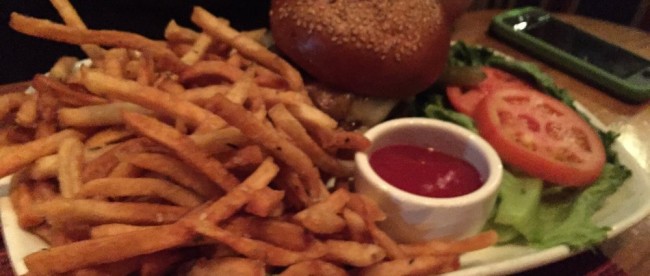You Can Taste the Price


The hamburger pictured above is from a fancy restaurant. It costs $17. And it probably tastes good. No, it has to — who would pay $17 for a burger and fries which didn’t? No one, at least not twice.
That makes sense: in order to stay in business with an expensive menu, whatever you’re selling better make for a good dining experience. But at some point, our palates can’t really discern between foods. When that happens, other signals take over. And at times, those signals can be so powerful that it overwhelms the rest of the experience. For example, would the same burger and fries above taste as good if they cost, say, $4? Maybe not.
In the fall of 2014, the Journal of Sensory Studies published a paper which investigated the effect on a meal’s price on a diner’s experience, and specifically, on how the diners rated their meals. The researchers teamed up with an all-you-can-eat buffet Italian buffet which offered unlimited pizza to its customers, and invited a bunch of people — 139, to be exact — to partake in a chow down. Afterward, each of the 139 customers was asked to rate the experience. There was only one wrinkle: some of the customers paid $4 for the privilege while others paid $8. And no, the former group didn’t know that they were getting a 50%-off deal. (Similarly, the latter didn’t know that they were paying twice as much as the other group.)
So, who liked their meal more? The ones who paid double, per the Atlantic: “Those who paid $8 rated the pizza 11 percent tastier than those who paid $4. Moreover, the latter group suffered from greater diminishing returns—each additional slice of pizza tasted worse than that of the $8 group.” Yes, even though they paid twice as much for the exact same product, the $8 group had a better time — and thought they got a better deal, even though objectively, it wasn’t.
What’s going on here? In a press release about the study, one of the authors of the paper, a Cornell professor named Dr. David Just, explained that, basically, a quality experience at a $4 all-you-can-eat pizzafest is simply too good to be true: “People set their expectation of taste partially based on the price — and it becomes a self-fulfilling prophecy. If I didn’t pay much it can’t be that good.”
So that $17 burger? It may taste good because of its high quality ingredients, a superior recipe, and better preparation than a $5 burger at a less fancy joint. Or maybe you’ve just convinced yourself that it does because hey, you paid $17 for it, and you had to have gotten your money’s worth… right?
Bonus Fact: In the study above, both the $4 and $8 groups ate the same amount of pizza — the difference in price didn’t change how much they ate. But what would happen if the $4 group knew that they were getting pizza at a discount? It turns out, they eat less. The above study isn’t the only one on all-you-can-eat buffets by Professor Just. In 2011, he and his Cornell colleague, Dr. Brian Wansink (who was also a co-author on the paper above) investigated that problem and found that the people paying full price ate about 4.09 slices per person while those eating for cheaper were “satisfied” at about 2.95 pieces a piece.
From the Archives: Thirty Minutes or Less: The pizza that saved lives.
Take the Quiz: Name the largest pizza chains in the United States.
Related: “Mindless Eating: Why We Eat More Than We Think” by Brian Wansink, cited above. The book discusses a bunch of different signals that we process in lieu of going by taste and the like (for example, Dr. Wansinks explores whether “music or the color of the room influences how much we eat.”) More than 450 reviews averaging 4.6 stars.
